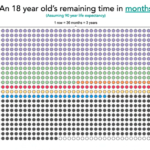The first few months of 2025 have been busy for us, helping loads of families and learning every day about different ways our kids are using technology in 2025.
Overall, the families we are working with are not always aware of what their kids are doing online and overwhelmed by where to start. We have also seen families who have tried parental controls and other approaches which have not always been successful.
We thought now was a good time to share some insights with you about what we are seeing — things that you might be able to watch out for, and potential solutions you can implement based on the age of your kids.
Pre-School and Younger Kids (Ages 3-5)
Now before we dive into this age group, let’s be honest—parents of little ones can often turn to screens as a distraction to get some time for themselves. This isn’t a judgment; it’s simply a reality of life in 2025. I’ve done it, and I’m sure many of you have too.
But the challenge for us is to recognise how we are using screens and check in with ourselves to ensure that screens aren’t becoming our go-to solution.
Some challenges we are seeing in homes.
- YouTube kids – There is some entertaining and educational content on the platform, but left unchecked kids very quickly get into dubious content. While much of it looks innocent, some YouTube Kids videos use rapid editing and stimulating effects similar to pokies which keep children engaged. This deep engagement also leads to the meltdowns we can also see. Early exposure to this type of engaging content (some experts say) may lead to compulsive behaviour later on.
- YouTube – It is installed on almost every smart TV and kids work out pretty quickly how to watch it. Even after it is deleted we see it get downloaded again. As we know there is plenty of content on there which is not suitable for young kids, but it is easily accessible with a TV remote.
- Roblox – It’s not as common in this age group, but we often see kids who have older siblings also using Roblox. Roblox parental controls have recently changed so many kids are using it unchecked. (more about this later)
- Reading and Educational apps – Some are great, but be aware that they are not all created equal. If they are using lots of flashing colours and noises, they might be doing more than just educating. They could also be setting kids up for addiction challenges.
- Accidental spending – This one has been happening for years, but even today kids are still racking up huge bills on apps with in app purchases.
- Behaviour Modelling – We see lots of kids with toy mobile phones, mimicking parental behaviours. Have you seen the meme videos of little girls pretending to be influencers?
Some solutions for parents:
Curate Kids Devices: Make sure only kid friendly apps can be accessed on devices your kids use. Restrict the ability to download new games and, most importantly, ensure purchases can’t be made without your permission! We would also suggest not saving card details to these devices.
Limit Screen Time: At this age, it is much easier to limit screen time by physically removing devices. However we also suggest you implement screen time which is available on most devices to help make sure your kids aren’t spending too much time in front of a screen.
Manage Content: Watch videos with your child, discuss what they’re seeing, and turn off auto play features to prevent endless viewing. At a minimum, use content filters to help control what they have access to.
Create Screen-Free Zones: Set tech-free boundaries for the whole family. Mealtimes, bedrooms, and outdoor play are important for family connection and healthy routines.
Model Healthy Use: Set a positive example by reducing your own screen distractions when spending time with your child. Show them that being present is more important than checking your device.
Encourage Offline Activities: Prioritise hands-on play, reading, and outdoor exploration over screen time. These activities help build creativity, focus, and physical well-being.
Primary School / Tweens (Ages 6-12)
This is the age group where we do most of our work and where parents can really take control before things get too complicated.
Kids in this age range are possibly also the most at risk of developing problems that can really manifest later.
Primary school kids are learning and exploring the online world at a pace that we could never have imagined when we were their age. In addition to their curiosity we see them influenced by their peers and what’s spoken about in the playground being explored in the online world.
For parents, this is a critical time to help shape how they’ll use and perceive technology in the future. Balance is key.
You should also ask yourself the question, ‘As your children get older do you want them to use devices as a tool? or do they become part of who they are?
Some challenges we are seeing in homes.
- Roblox – A business marvel and a parents nightmare! Roblox simply provides the platform for others to develop games. So that game your 7 year old is in love with playing, could have been developed by a teenager in Texas, or a 40 year old in Frankston. And it’s not just kids playing on Roblox there are also many adults, some of whom may be interacting with children in the game.
- YouTube – As I mentioned above, it is available on every smart TV and kids this age are reinstalling it after it has been deleted by their parents. Now while there is some great content and shows available, there is also some rubbish. The top thing we are seeing kids loving is YouTube shorts, it is like TikTok for kids and can quickly consume hours.
- Gaming Consoles – Nintendo Switch, Xbox and PlayStation are all widely used. The games getting played varies considerably and often depends on older people in the house. The other challenge with these is that the controls are lacking substantially.
- Search Engines – Curiosity and school yard conversation can lead to kids looking up all sorts of content. Some of it is not what you want them to see. Many devices have more than one search engine and while some may be protected others often provide full internet access..
- Messenger Kids – Post-COVID, it’s common for kids to use Messenger Kids to chat with friends and family. We are seeing loads of kids use it to talk to their friends while playing games, making it a convenient tool. It is great that they can only interact with approved contacts, however, it’s important to remember that kids this age aren’t likely to understand online etiquette. There’s potential for mean behaviour or bullying. Keep an eye on their interactions to ensure they’re using it responsibly.
- Social Media – while it isn’t recommended for kids under 12 there are plenty of kids with TikTok and Snapchat accounts. Some set it up without their parents’ knowledge. Again, as expressed in the point above it’s important to remember that kids at this age may not fully understand online etiquette.
- Binging and Obsession – Kids in this bracket can easily get obsessed with a game and can easily binge for hours if not kept in check.
Some solutions for parents:
Parental Controls: Layers of protection are key to help protect curious kids. Network filtering, Router level Controls and Content filtering are all tools you can leverage as part of a layered solution.
Screen Time Limits: Can be set up on devices using Apple Screen Time, Google Family Link, or gaming console settings. There are also great controls that can be configured from your router.
Roblox Parental Controls: This gets its own section as there was a major change in October, 2024 which has meant many kids are now completely unchecked. As a parent, if you haven’t created your own Roblox account and linked your children’s accounts, they will have little to no restrictions.
No Devices in Bedrooms: No exceptions
Sign a Family Tech Contract: Have a family discussion about how and when technology will be used at home. Setting clear expectations for everyone helps create a healthier tech routine and better outcomes for the whole family.
Learn, Discuss Usage and Monitor: Regularly talk with your kids about their online activities and screen time, learn about what they are doing online. Keeping an open dialogue helps establish a strong foundation for responsible tech use in the future. To have this dialogue you need to understand what they are talking about.
No Social Media: Even if they ask repeatedly, stay firm and hold off on allowing apps like Instagram, Snapchat, and TikTok at this age. It’s important to wait until they’re ready for the responsibilities that come with social media. Plus, it will soon be illegal in Australia for kids under 16 so you have the perfect excuse.
Model Healthy Use: Set a positive example by limiting your own screen distractions when spending time with your child. Try to be really conscious about your device usage. If you need to answer an email or check something in the evening, do it on your computer rather than your phone. Your kids see everything you do and their perception is often different to reality when it comes to devices.
High School / Teens (Ages 13-18)
If your kids are in this age bracket you are likely experiencing anywhere from mild to extreme frustration with mobile phones!
No surprises that social media is at the centre of almost everything for this age group. If something’s trending on TikTok or Snapchat, chances are your teens will want to try it, buy it, replicate it, or tear it down.
Being a teenager has been tricky for every generation, but today’s teens are navigating even more complex issues with the added influence of modern technology. This is a huge topic, so we’ve done our best to provide a brief overview.
What we are seeing in homes (and outside of them).
- Snapchat – it is the primary communication channel for teenagers. This means for most kids, if you are not on it you are left out. But it often comes with constant contact, location sharing and image sharing.
- TikTok & Instagram – They have been grouped as they provide similar outcomes. Doom scrolling and the unrealistic portrayals of people can lead to mental health challenges including body dysmorphia.
- Risk-Taking Trends – We’ve noticed that many early-teen boys are watching content that features risky behaviour, and some are even re-enacting these actions. This can be a concerning trend, as they may not fully understand the consequences. Conversations with Social Workers support this with them noting that risk taking behaviour of 12 – 13 year olds is similar to that of 16 – 17 year olds a few years ago.
- Excessive Screen Time – Many US studies show that, on average, teenagers spend about 7 hours per day on screens. Assuming an 18-year-old lives to 90, that could mean they’ll spend approximately 21 years of their life on a device. Pretty shocking, right?
- In the media – Thankfully we haven’t yet worked with families who have experienced the following, but they are very real threats and are being publicly discussed.
- Radicalisation – Online algorithms push more extreme content to keep viewers engaged. This can be a real risk for young boys who are searching for answers. These algorithms can lead them down potentially harmful paths and put them at risk of being negatively influenced.
- Cyberbullying & Sextortion – Sharing of images has led to many documented cases of cyberbullying and sextortion. The outcomes of these unfortunately can and have been tragic.
- AI & Deepfake Risks – AI-generated content is becoming increasingly realistic. With just one image, it’s possible to create convincing deep fakes, raising the risks of blackmail, misinformation, and identity manipulation.
Some solutions for parents:
Parental Controls STILL matter: They will be more relaxed than those for younger kids but they are still important.
Discussions: Keep the lines of communication open. Make sure your kids feel comfortable coming to you whenever they need support or have concerns.
Balance: Help teens recognise when they’re doom scrolling and encourage scheduled breaks from social media.
Use Technology to Help: Every phone has the ability to tell you screen time. Regularly check it as a family and keep each other accountable. There are also apps that help teens manage their device usage and encourage them to experience the real world. Check out BePresent, Mobicip or Bark.
Critical Analysis Skills: Help your teens think deeply about what they are looking at. Discuss how influencers curate content and how algorithms push extreme viewpoints. Encourage your teen to think critically about the content they see online and even in the news.
Talk About Privacy: The risks of sharing personal images and information are real. Help your teen establish clear rules for online communication to protect their privacy.
Monitor Gaming Habits: Set gaming curfews and use Xbox Family Settings or PlayStation parental controls.
Discuss Porn & Misinformation: Teens WILL encounter porn — help them understand that it’s not real and discuss healthy relationships.
Create an Exit Plan for Toxic Situations: Teach teens strategies to disengage from harmful online conversations or avoid getting stuck in negative content.
No Devices in Bedrooms: No exceptions
Model Healthy Use: The same as you would for younger kids, set a positive example by limiting your own screen distractions when spending time with your child. Being present and engaged shows our kids the importance of balancing technology and real-life interactions.
Final Thoughts
We hope that this summary will provide you a little bit more insight, or at least help you feel like you are not alone parenting in 2025.
Although we briefly mentioned AI above, it is a topic that is and will impact every age bracket. There are huge benefits in the way it can be used, but we also need to acknowledge that for our kids (and us) it will make it even harder to differentiate real content from AI generated content.
Regardless, for parents in 2025 Screen safety demands proactive parenting, ongoing conversations, and effective tools.
We encourage you to start engaging more and more with your kids technology use and also to continually adjust your approach to suit your child’s age and development stage. At the end of the day we are just trying to help them use technology responsibly while minimising risks.
If you are still feeling overwhelmed or concerned please get in touch as we would love to help you out.
Pete.







